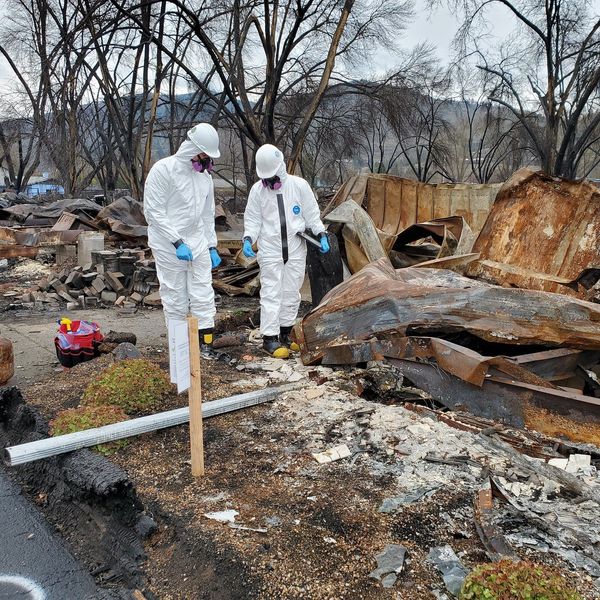When a seabird is found with a belly full of plastic bags, or a turtle is strangled by six-pack rings, it's easy to see how our trash turns deadly when it enters the oceans.
It's much harder to track the effects of the tens of thousands of chemicals that are dumped in the ocean every day, through sewage, agricultural runoff, and industrial waste—most of which have unknown effects on wild ecosystems. What we do know is that the bodies of marine animals act like magnets for these toxics, which accumulate in their fat and are amplified up the food chain.
When dolphins and whales strand on the beach, response teams perform necropsies to determine the cause of death, but these tests don't normally include toxicological assessments. In a new study, published last week in Frontiers in Marine Science, blubber and liver samples from 83 dolphins and whales stranded on Florida and North Carolina beaches from 2012 to 2018 were screened for a variety of chemical pollutants. The researchers found a variety of contamination including some of the highest mercury and arsenic levels ever recorded in stranded dolphins and whales.
"The liver is the filter of the blood," Annie Page-Karjian, a marine wildlife veterinarian at the Harbor Branch Oceanographic Institute and the lead author of the study, told EHN. "It's kind of like sampling your air conditioner filter."
The study also included some toxics that had never been investigated before in stranded marine mammals—like triclosan, which is found in many antibacterial soaps, and diethyl phthalate (DEP), a synthetic chemical that makes plastics more flexible. Atrazine, an herbicide that is usually found in freshwater animals and may be an endocrine disruptor, was found in trace amounts in bottlenose dolphins.
"It is concerning that it is even detectable in animals that spend most of their time offshore," Brenda Jensen, a marine mammal biologist and toxicologist at Hawaii Pacific University, who was not involved with the study, told EHN.
Though the study is small, it provides a rare glimpse into the chemical profiles of a range of species. Pygmy sperm whales, which are seldom seen alive, exhibited high levels of cadmium, which is known to concentrate in the deep-sea squid they dive for.
One Gervais' beaked whale—a species that has never been chemically profiled—had the highest concentrations of arsenic in her liver ever reported in a marine mammal. Two bottlenose dolphins contained sky-high levels of mercury, a heavy metal that is released in the burning of coal and absorbed by the ocean.
Many of these chemicals persist in an animal's tissues for its whole life, but females have a way of offloading toxics: by giving birth. Certain heavy metals like copper and lead can cross the placenta and accumulate in the fetus, a phenomenon the researchers observed in four mothers who were pregnant when they died. In highly polluted waterways, like Florida's Indian River Lagoon, first-born calves are likely to die because they've inherited so much toxicity from their mother. Often the second-born dies, too.
Even in a study as ambitious as this one, which also included analysis of tissue lesions and organ damage, it's hard to know how these animals' health is affected by their chemical burden.
"A complicating (and frustrating) reality that comes with interpreting data from stranded cetaceans is that the animal often shows evidence of many health issues, and it is difficult to tease apart the relative importance of the underlying factors," said Jensen.
The researchers stress that it's important to build up the knowledge base by making it common practice to test for toxics in stranded animals.
Understanding the contaminant burden in sentinel species has important implications for human health, as well, because dolphins and humans like to eat the same fish.
"Many of the chemical profiles that we see in cetaceans are similar to the types of chemical profiles that we see in humans who live in those coastal areas," said Page-Karjian. "It's certainly not happening in a vacuum."
Banner photo: Stranded bottlenose dolphin in Florida. (Credit: FWC Fish and Wildlife Research Institute)

























